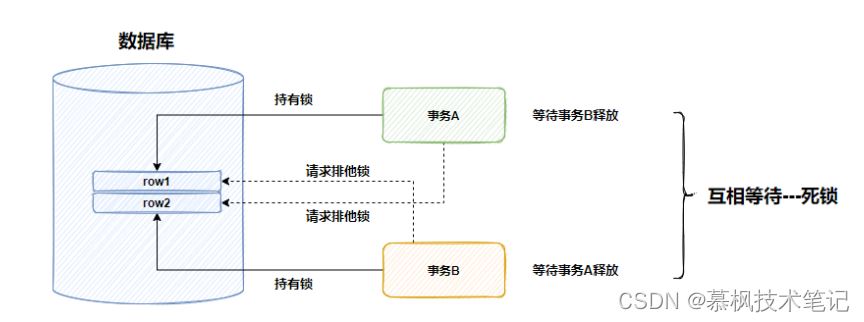目录
- sql时间用法
- 获取当前日期的函数&&获取当前时间的函数
- 获取当前日期的函数
- 获取当前时间的函数
- 获取当前日期加时间的函数
- 函数: current_timestamp
- 函数: transaction_timestamp()
- 函数: statement_timestamp()
- 函数: clock_timestamp()
- 函数: timeofday()
- 函数: now()
- 延迟执行
- 函数: pg_sleep()
- 函数: pg_sleep_for ()
- 函数: pg_sleep_until()
- 时间和日期函数
- to_char(timestamp, text)
- to_char(int, text)
- to_char(double precision, text)
- to_date(text, text)
- to_number(text, text)
- to_timestamp(text, text)
- date – date
- date_part(text, timestamp)
- date_trunc(text, timestamp)
- extract(field from timestamp)
- make_date(year int, month int, day int)
- 使用timestamp来比较时间
- 使用interval添加时间
- 总结
sql时间用法
PostgreSQL 提供了大量用于获取系统当前日期和时间的函数,例如 current_date、current_time、current_timestamp、clock_timestamp()、localtimestamp、now()、statement_timestamp()等;同时还支持延迟语句执行的 pg_sleep()等函数
数据库有很多,mysql、sqlserver等存在存储过程,所需要用到的函数各不相同,本文列举一下PostgreSQL的语法。日期和时间函数主要用来处理日期和时间值,一般的日期函数除了使用date类型的参数外,也可以使用datetime或者timestamp类型,但会忽略这些值的时间部分。相同的以time类型值为参数的函数,可以接受timestamp类型的参数,但会忽略日期部分。
获取当前日期的函数&&获取当前时间的函数
1、获取当前日期的函数和获取当前时间的函数:current_date和current_time
2、调用该函数时不需要在函数名后加括号。该日期是服务器的日期,不是客户端的日期。
注意:
上面所有的函数,包括 CURRENT_DATE,返回的都是当前事务开始的时间。在同一个事务期间,多次调用相同的函数将会返回相同的值,结果不会随着时间增加。这一点与其他数据库的实现可能不同。
获取当前日期的函数
current_date函数:的作用是将当前日期按照“YYYY-MM-DD”格式的值返回,具体格式根据函数用在字符串或是数字语境中而定的。
select current_date;
获取当前时间的函数
current_time函数:的作用是将当前时间以“HH:MM:SS”的格式返回,具体格式根据函数用在字符串或是数字语境中而定的。
select current_time;;
localtime函数:的作用是将当前时间以“HH:MM:SS”的格式返回并且localtime没有时区。
select localtime;
获取当前日期加时间的函数
基本上current_timestamp,transaction_timestamp()和now()完全相同。current_timestamp是一个函数的语法奇怪,没有尾对括号,这是根据sql标准。
如果未在sql语句中声明函数调用的列别名(需要一个),则别名默认为函数的名称。在内部,标准sql current_timestamp使用now()实现,并在您查看默认列别名时显示。
函数: current_timestamp
select current_timestamp;
函数: transaction_timestamp()
transaction_timestamp() 等价于 current_timestamp,但是作用更加明确。
select transaction_timestamp();
函数: statement_timestamp()
statement_timestamp()返回当前语句的开始时间,更准确地说,应该是接收到客户端最新命令的时间。与transaction_timestamp相比,对于事务中的第一个命令返回的结果相同,但随后再执行 statement_timestamp() 将会返回不同的值。
select transaction_timestamp();
select statement_timestamp();
BEGIN;
BEGIN
SELECT statement_timestamp();
SELECT pg_sleep(3);
SELECT statement_timestamp();
COMMIT;
COMMIT
两次执行结果之间相差了 3 秒左右。
当我们在存储过程(Stored Procedure)中进行调试时,通常需要打印不同语句消耗的时间;此时就需要使用 statement_timestamp(),而不能使用 CURRENT_TIMESTAMP 或者 transaction_timestamp():
CREATE OR REPLACE sp_test
…
DECLARE
lts_systimestamp timestamp;
BEGIN;
lts_systimestamp := statement_timestamp();
…
RAISE NOTICE \’Step 1 take time: %\’, statement_timestamp() – lts_systimestamp;
…
END;
函数: clock_timestamp()
clock_timestamp()与statement_timestamp()相比,后者是接收到客户端信息的时候更新时间,而clock_timestamp()接受到信息以后每次调用这个函数打印的时间戳都不一样。返回的是实际时间。
SELECT clock_timestamp();
SELECT clock_timestamp() FROM generate_series(1,10);
clock_timestamp() 返回当前实际的时间,即使在同一个 SQL 语句中也可能返回不同的值:
因为我使用的是Dbeaver客户端,所以返回的精度不高。正常来说,查询语句在 1 秒钟内返回了 10 条记录,但是每条记录产生的时间都不相同。
函数: timeofday()
timeofday()与clock_timestamp()一样返回的是实际的时间,不过timeofday()函数返回类型是一个格式化的字符串,而不是 timestamp with time zone:
SELECT timeofday();
SELECT timeofday() FROM generate_series(1,10);
函数: now()
now()与transaction_timestamp() 一样
select now() ;
注意: now() 是 PostgreSQL 中与 transaction_timestamp() 等价的一个传统函数,同一个事务中的结果不会改变。
另外,所有的日期/时间数据类型都支持使用字面值’now’指定当前日期和时间(当前事务开始时间)。因此,以下语句效果相同:
SELECT CURRENT_TIMESTAMP;
SELECT now();
SELECT TIMESTAMP \’now\’;
另外,PostgreSQL 还提供了其他几个特殊的日期和时间字面值:
以上函数分别返回 UTC 1970 年 1 月 1 日零点、今天午夜、明天午夜、昨天午夜以及 UTC 零点。
延迟执行
以下函数可以用于延迟服务器进行的操作:
pg_sleep(seconds)
pg_sleep_for(interval)
pg_sleep_until(timestamp with time zone)
函数: pg_sleep()
pg_sleep 将当前会话的进行暂停指定的秒数。seconds 的类型为 double precision,所以支持小数秒。我们在面前使用了该函数。
select pg_sleep(10);
函数: pg_sleep_for ()
pg_sleep_for 执行一个延迟的时间间隔,通常用于指定一个较大的延迟。
select pg_sleep_for(\’2 minutes\’);
函数: pg_sleep_until()
pg_sleep_until 可以用于指定一个进程的唤醒时间。
select pg_sleep_until(\’tomorrow 05:00\’);
以上示例分别暂停 1.5 秒、5 分钟以及直到明天 5 点,在特定的存储过程里面,可以满足一些需求。==注意:==使用这些延迟函数时,确保当前会话没有锁定过多的资源;否则,其他会话将会一直等待,导致系统性能的下降。
时间和日期函数
to_char(timestamp, text)
to_char(timestamp, text)
将时间戳转换为字符串。
SELECT to_char(current_timestamp, \’HH:MI:SS\’)
to_char(int, text)
to_char(int, text)
将整数转换为字符串。
select to_char(125, \’999\’);
to_char(double precision, text)
to_char(double precision, text)
将实数或双精度数转换为字符串。
select to_char(125.8::real, \’999D9\’);
to_date(text, text)
to_date(text, text)
将字符串转换为日期。
select to_date(\’22 Oct 2022\’, \’DD Mon YYYY\’);
select to_date(\’2022-10-20\’, \’yyyy-mm-dd\’);
to_number(text, text)
to_number(text, text)
将字符串转换为数字。
select to_number(\’12,454.8-\’, \’99G999D9S\’);
to_timestamp(text, text)
to_timestamp(text, text)
将字符串转换为时间戳。
select to_timestamp(\’05 Dec 2000\’, \’DD Mon YYYY\’)
date – date
date – date
日期的减法运算。
select date \’2020-01-01\’ – date \’2020-01-05\’
date_part(text, timestamp)
date_part(text, timestamp)
从时间戳中获取子字段。
select date_part(\’hour\’, timestamp \’2001-02-16 20:38:40\’)
date_trunc(text, timestamp)
date_trunc(text, timestamp)
截断时间戳到指定精度。
select date_trunc(\’hour\’, timestamp \’2001-02-16 20:38:40\’)
extract(field from timestamp)
extract(field from timestamp)
从时间戳中获取子字段。
select extract(hour from timestamp \’2001-02-16 20:38:40\’)
make_date(year int, month int, day int)
make_date(year int, month int, day int)
使用年月日创建日期。
select make_date(2013, 7, 15);
使用timestamp来比较时间
使用timestamp来比较时间
select \’2020-01-01\’ < \’2019-01-01\’::timestamp+ \’360 day\’
使用interval添加时间
INTERVAL ‘3’ DAY 时间间隔为3天
INTERVAL ‘2’ HOUR 时间间隔为2小时
总结
到此这篇关于PostgreSQL时间日期的语法及注意事项的文章就介绍到这了,更多相关PostgreSQL时间日期内容请搜索悠久资源以前的文章或继续浏览下面的相关文章希望大家以后多多支持悠久资源!


























